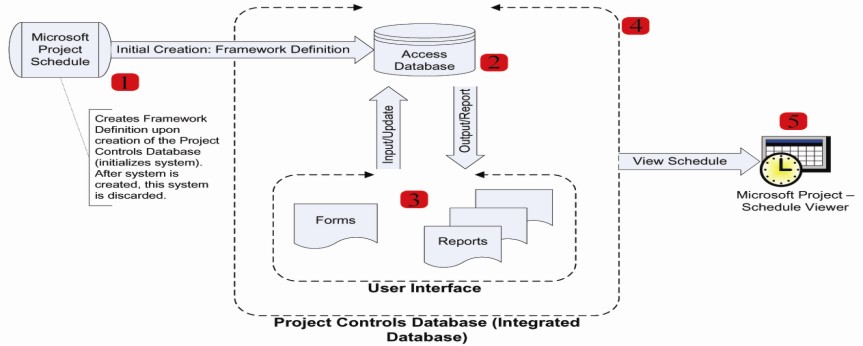
engineering & technology publications
ISSN 1759-3433
PROCEEDINGS OF THE TENTH INTERNATIONAL CONFERENCE ON CIVIL, STRUCTURAL AND ENVIRONMENTAL ENGINEERING COMPUTING
An Innovative Project Controls System
Department of Construction Science, Texas A&M University, College Station, TX, United States of America
This paper presents a project controls system (PCS) that should assist project managers in integrating cost, scheduling, and percentage of completion and objectively analyzing the performance of construction projects. The system contains a database that constantly reflects the project schedule and hence maintains current scheduling data, budget amounts, and actual expenditures. The database also calculates the earned value, percentage of completion, performance indices, forecasts and variances for each project task and generates project summary reports. Such real-time information allows early identification of scheduling problems and budget overruns as they occur.
The system is founded on the utilization of a work breakdown structure (WBS) that systematically establishes logical relationships among the project activities and organizes the tasks in a meaningful hierarchical manner to facilitate project controls and data retrieval. The percentage of completion is calculated using the earned value concept, which is applied through the use of a set of control points that is suitable to each scheduling activity.
The system involves the use of two pieces of software: 1) Microsoft-Project as the scheduling software and 2) Microsoft-ACCESS as the database software. Figure 1 shows the schematic architecture of the proposed system. As shown in the figure, the system is initiated with a Project schedule (step one). The schedule is then saved as an ACCESS database, not as an MS-Project file (step two). By doing so, a number of tables are automatically created by MS-Access that allows the access and manipulation of the scheduling data and allows other data columns to be easily added to the database (e.g., control points, actual expenditures). Such data manipulation is facilitated through an ACCESS users' interface/form (step three). The user interface contains a number of buttons to specify the users' selections (e.g., start a new project, edit existing project, enter control points, enter actual expenditures, perform calculations, generate management reports, etc). Also from the user's interface and through several created queries, a number of calculations are performed (e.g., earned value, percent complete, performance indices, forecasts and variances) (step four). Using the earned value concept, the percentage of completion is objectively calculated for each activity. The calculated percentage of completion is then imported into MS-Project in order to update the schedule. In other words, MS-Project becomes merely a viewer tool of the scheduling data that is being stored and updated in the ACCESS database (step five). A number of macros were written to minimize the manual manipulation of data.
The paper includes an example project to illustrate the systems features and capabilities. The paper also discusses the several challenges that resulted from the automatic data transfer between MS-Project and MS-ACCESS. Such challenges were overcome during the course of this study. These challenges and their solutions are documented in the paper.
- 1
- W.M. Stevens, "Cost Control: Integrated Cost/Schedule Performance", Journal of Management in Engineering, 157-164, 1986. doi:10.1061/(ASCE)9742-597X(1986)2:3(157)
- 2
- R. Navon, "Automated project performance control for construction projects", Automation in Construction, 1-10, 2004. doi:10.1016/j.autcon.2004.09.006
purchase the full-text of this paper (price £20)
go to the previous paper
go to the next paper
return to the table of contents
return to the book description
purchase this book (price £135 +P&P)
